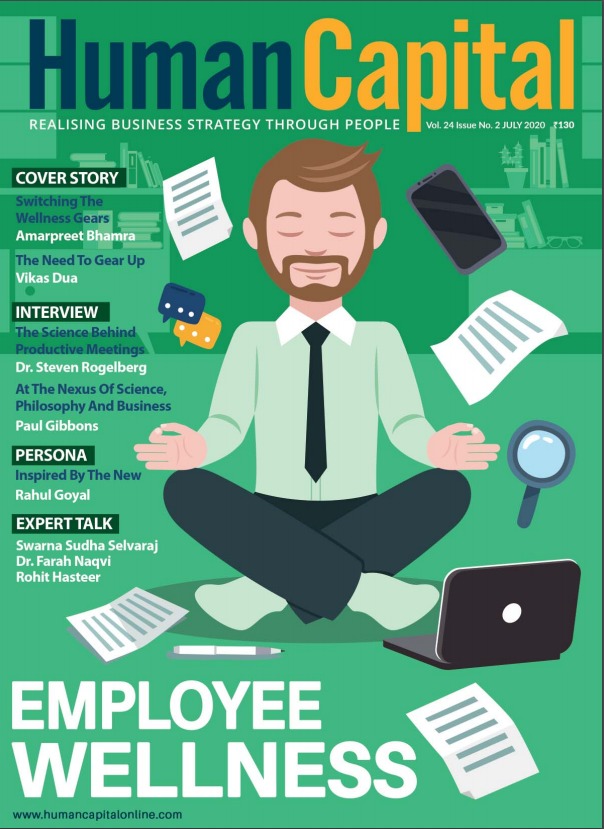While the pandemic will generate new insights on work, as more and more people work from home, many organisations will eventually seek to restore work in traditional co-located spaces.
Over the last two months this column has maintained that while the pandemic will generate new insights on work, as more and more people work from home, many organisations will eventually seek to restore work in traditional co-located spaces. Recent developments seem to bear this out.
First, the insights. In a recent paper in HBR, Natalie SingerVelush and others have shared the findings of their study of Microsoft employees working from home. The researchers pieced together remotely-gathered data of calendar appointments, message volumes, log-in/log-out incidents, keyboard activity, and other indicators across different roles. Some of the findings are intuitive, but others are not. They found that:
♦ Employees worked longer hours than usual. This confirms anecdotal evidence.
♦ People set up many more meetings with each other. This was probably because informal walk-in consultations were not happening.
♦The meetings became shorter. This was counter-intuitive, interesting and encouraging.
♦They messaged each other more often. Individual contributors generated around 50% more messages while managers generated almost 150% more messages. This was interesting. Clearly, managing dispersed employees working from home involved more effort from managers.
♦Managers carried out more oneon-one sessions with their team members. This reinforces the point about managerial challenge. Presumably, some of this is also required to keep the remote worker engaged and aligned.
♦There was a reduction in multitasking. People did not do other work alongside meetings. This was counterintuitive and needs greater analysis. Maybe people missed the other visual and aural cues that are generated in physical meetings, which helped them decide the degree of attention needed, and therefore, were more attentive.
♦There were ‘holes’ in work schedules that were, presumably used to attend to other tasks at home. The interesting finding was that people learned to accommodate each other’s requirements. The paper shares a company-wide activity graph showing a dip at ‘lunchtime’ when no such strict requirement had been imposed.
The research team did not poll the employees on their opinions around these findings. This could have provided additional insights into the volitional aspect of the observed behaviour. In other words, did managers communicate more because they found work quality dipping otherwise? Did teams shorten meetings to accommodate calendar pressure (‘many more meetings’) or did meetings genuinely become more productive and therefore shorter? And so on. Polling employees would have also thrown light on how they feel about such a comprehensive and granular monitoring of their time. Do some people find it oppressive that each time they open a tab, make an entry on their calendar or send a message, they are generating data that will be analysed by someone they do not even know?
Next, the assessment. One has been getting feedback from business leaders that the work from home option is stressful for managers and particularly difficult for assimilating new hires. No amount of onboarding effort comprising documentation, videos, one-on-one orientation, and team meetings can replace the acculturation that happens when a new hire physically observes seniors, juniors and colleagues at work and chats with them in between work. Similarly, team mates find it hard to effectively engage with someone they have never met in a physical setting. How detailed should their communication be to such a person, to ensure that he or she understands what has to be done? In the absence of regular visual cues, how does one know whether feedback has been accepted positively or caused offence? And so on.
A recent article in the Wall Street Journal compiles more such anecdotal evidence and concludes that companies may be tiring of pure-play work from home. Projects are taking longer to complete. Freshers from campuses who are in their first job are finding it difficult to ask for help in small but important matters that they would otherwise have resolved through observation. Learning on the job is suffering in cases where it involves close and continuous apprenticeship with an expert. People are exhausted from elastic work schedules and are looking for greater, ‘normal’ structure in their workday. Possibly because of all this, companies that have made physical attendance optional, in recent times, are seeing a lot of people choosing to come to work.
Laszlo Bock, former head of HR at Google and author of ‘Work Rules!’, is quoted as saying that the early productivity gains of work from home have levelled off. His precise words are, “It was people terrified of losing their jobs, and that fear-driven productivity is not sustainable.” This is worth pondering. As a matter of fact, jobs are being lost. No day passes without some announcement of that sort by some company or the other. Recently, the papers reported a rise in psychological stress disorders in people who have not yet been infected by the novel coronavirus but are scared that they might get infected. Something similar is happening at work with people who have not yet lost their jobs but are terrified that they might. As jobs go away, the feardriven productivity may hold for some more time, but clearly, Bock is right and this is not sustainable.
What then is the way forward? Unfortunately, no clear consensus is emerging around this, other than the eventual return to co-located working with safeguards. These include increased spacing between seats, rostering to allow a fraction of employees in the office by rotation over the week, greater hygiene requirements from employees, modified menu and service in cafeterias and more elaborate cleaning routines by housekeeping staff. This will continue to be an area of innovation, experimentation and study and we will keep returning to it.
Meanwhile, companies are distracted by more pressing matters like survival in a moribund global economy and local economies that are spiralling down in many sectors. Some companies will fold up, some will be crippled, and some will have to pivot to a completely different business model. For such organisations, employee work location becomes a secondary issue.
References:
1. “Microsoft Analyzed Data On Its Newly Remote Workforce”; Natalie SingerVelush, Kevin Sherman & Erik Anderson; HBR; 15 July 2020
2. “Companies Start To Think Remote Work Isn't So Great After All'; Chip Cutter; WSJ; 24 July 2020
Follow and connect with us on LinkedIn, Facebook, Instagram, Twitter for latest HR news and insights.
(1).jpg)
Is your organisation post-COVID-ready?
Trending
-
SBI General Insurance Launches Digital Health Campaign
-
CredR Rolls Out 'Life Happens' Leave For Its Employees
-
Meesho Announces 30-Week Gender-Neutral Parental Leave Policy
-
Microsoft Unveils Tech Resilience Curriculum To Foster An Inclusive Future
-
60% Indian Professionals Looking For Job Change Due To COVID: Survey
-
SpringPeople And Siemens Collaborate For Digital Transformation Push
-
86% Professionals Believe Hybrid Work Is Essential For Work Life Balance: Report
-
Almost 1 In Every 3 People's Personal Life Affected Due To Work Stress
-
Meesho Rolls Out Reset And Recharge Policy For Employees
-
80% Of Talent Leaders & Academics Say Pandemic Changed Skill Needs For Youth: Report
-
Hero Electric Rolls Out 'Hero Care' Program For Employees
-
Human Capital In Collaboration With ASSOCHAM Hosts Virtual Conference
-
IKEA India, Tata STRIVE Collaborate To Create Employability And Entrepreneurship Opportunities
-
SAP India, Microsoft Launch Tech Skilling Program for Young Women
-
DXC Technology, NASSCOM Collaborate For Employability Skills Program
-
Lenskart To Hire Over 2000 Employees Across India By 2022
-
Mindtree Launches Learn-and-Earn Program
-
Tata AIA Extends 'Raksha Ka Teeka' To Its Employees
-
Swadesh Behera Is The New CPO Of Titan
-
NetConnect Global Plans To Recruit 5000 Tech Professionals In India
-
Hubhopper Plans To Hire 60% Of Indian Podcasters By 2022
-
Corporate India Needs More Women In Leadership Roles: Report
-
Aon to Invest $30 Million and Create 10,000 Apprenticeships by 2030
-
Tech Mahindra Launches ‘Gift a Career’ Initiative for Upskilling of Youth
-
40% Women Prefer Flexible Working Options in Post-COVID World: Survey
-
3 out of 4 companies believe they can effectively hire employees virtually: Report
-
Vodafone , CGI and NASSCOM Foundation launch digital skills platform
-
Odisha: Bank, postal employees to deliver cash for elderly, differently-abled persons
-
Skill India launches AI-based digital platform for "Skilled Workforce"
-
Hiring activity declines 6.73% in first quarter: Survey
-
70% startups impacted by COVID-19 pandemic
-
Bajaj Allianz Life ropes in Santanu Banerjee as CHRO
-
Over 70 Percent MSMEs look at cutting jobs to sustain businesses
-
93 Per Cent employees stressed about returning to office post-lockdown
-
Johnson & Johnson India announces family benefits for same gender partners
-
Indian firms turning friendly towards working mothers
-
Welspun India names Rajendra Mehta as new CHRO
-
Wipro partners with NASSCOM to launch Future Skills platform



Human Capital is niche media organisation for HR and Corporate. Our aim is to create an outstanding user experience for all our clients, readers, employers and employees through inspiring, industry-leading content pieces in the form of case studies, analysis, expert reports, authored articles and blogs. We cover topics such as talent acquisition, learning and development, diversity and inclusion, leadership, compensation, recruitment and many more.
Subscribe Now











































Comment